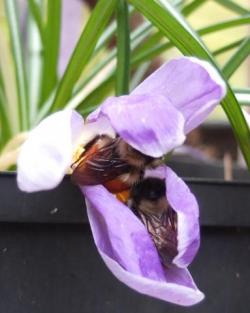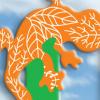Plants that attract bees & info on Lasqueti

Lupine Lupines sp.
Lavender (lavandula angustifolio, L. multifida)
Borage, Borago officinalis
Cranesbills, Geranium sp.
Bigroot Geranium, Geranium macrorrhizum,
Hyssop, Hyssopus officinalis
Anise Hyssop Agastache rugosa,
Phacelia, Phacelia tanacetifolio
Catmint, Nepeta sp.
Fuschia, Fuchsia magellanica
Onion, Chives, Garlic, Alliu spp. Allium schoenoprasum
Butterfly Weed, Asclepias tuberosa
Bee Balk, Wild Bergamot, Monarda fistulosa,
Sweet Clovers, Melilotus sp.
Cosmos, Asteraceae spp.
Scabious Pincushion Flower, Scabiosa spp.
Golden Rod, Solidago sp.
Eryngium, Sea Holly, Eryngium spp.
Snapdragon, Antirrhinum sp.
Fleabane, Erigeron alpinus
Spider Flower, Rocky Mountain Bee Plant, Cleome sp.
Foxglove, Digitalis sp.
Artichoke, Cynara sp..
Hollyhcoks, Alcea sp.
Verbena, Berbena sp.
Black-eyed Susan, Rudbeckia hirta
Sunflower, Helianthus spp.
Veronia, Veronica spp.
Lavatera, Lvatera sp.. (AKA Malva)
Cornflower, Centaurea cyanus
Poppy, Papaver sp.
Sage Salvia
Heather, Erica sp.
(by Andrew and Marie-Ange Fall, from our Newsletter, Spring 2016)
On Lasqueti changes in forest cover, reduction in forest fires and grazing by feral sheep over the past century have reduced flowering native plants. People have offset some of this loss through planting orchards and other flowing plants. Surrounding islands, free from browsing sheep, such as Sangster, the Finnerties and Fagan Islands have a high abundance of flowering native plants. Like everywhere else, there is uncertainty regarding the status and trend of essential native pollinators.
How we can help:
There are a few simple things we can do to encourage and enhance local native pollinators [4]:
(i) Provide food
- Grow plants for bees that flower over the entire growing season. Some examples include [8,9,10]: o Early spring: early-flowering fruit trees (e.g. stone fruit such as peaches and plums), pussy willow, rosemary, bog rosemary, daffodils, crocus, bluebells, lungwort, California poppies, phacelia
o Late spring: raspberries, blueberries, sage, chives (left to flower), hyssop, thyme, salvia, geranium, honeysuckle, poppies, wisteria, heather, yarrow
o Summer and early fall: strawberries, melons, blackberries, squash, catmint, mint, roses, sunflowers, delphinium, snap-dragons, lavender, hollyhock, cosmos, cornflowers, coneflowers (e.g. echinacea), asters
- Naturescape [11]: in or near your garden, retain or plant patches of wild rose, salal, Oregon grape, salmonberries, sedum (stonecrop), oceanspray, columbine, etc.
- Maintain hummingbird feeders (esp. over winter for Anna’s hummingbirds)
(ii) Provide shelter
- Build a mason bee condo or box for other bee species
- Leave some patches of exposed mud and clay for queens to build hives
- Retain some undisturbed areas near garden for hives
(iii) Protect pollinators
- Protect hummingbirds from cats
- Avoid using insecticides


